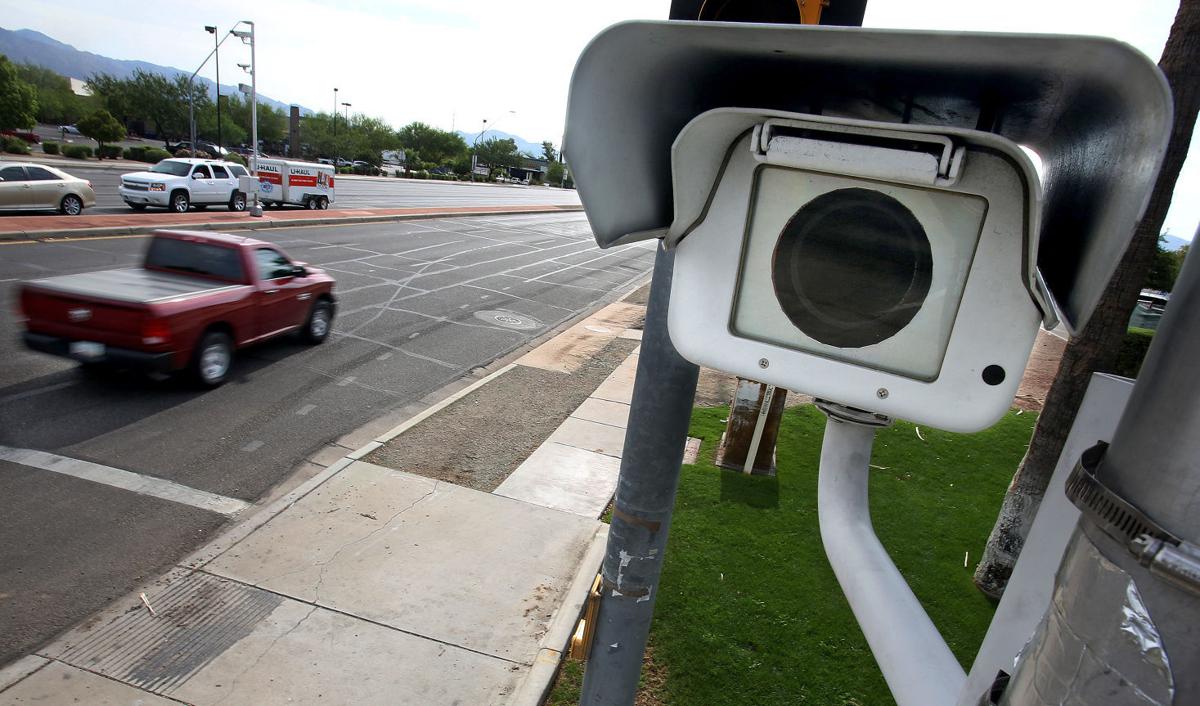Police Chief Roberto Villaseñor walked a fine line last week when talking about the much-reviled photo-radar cameras installed at various Tucson intersections.
The retiring head of the Tucson Police Department focused his comments to the City Council on public safety, carefully setting aside how much revenue each ticket drops into city coffers.
City voters will decide the fate of the cameras in November as part of a citizen-run initiative to take them down. Photo radar cameras on mobile vans and fixed at intersections have been part of the Tucson landscape since 2007.
Vehicular crashes in Tucson killed 92 people and cost the city an estimated $1.5 billion dollars over the last fiscal year, Villaseñor said. The figure is calculated using a complex formula that takes into account property damage, loss of productivity and the cost of police investigations as well as medical, legal and insurance bills. It also includes the U.S. Department of Transportation’s Value of a Statistical Life: $9 million for each fatality.
Collisions at the eight Tucson intersections with traffic cameras are down considerably, from 188 in the 2006 fiscal year to 57 in fiscal 2015, Villaseñor said.
Also, 85 percent of the people who received a citation from one of the cameras or the two mobile radar vans operated by Phoenix-based American Traffic Solutions never got a second one.
“Tucson had been ranked as fourth in the nation by the insurance industry for highway safety for traffic-collision fatalities related to red-light violations,” he told the council.
Duplicating the cameras’ 24-hour, seven-day work week with uniformed officers would take roughly 160 additional officers, he said.
John Kromko, who has worked for years to get the photo-radar enforcement on the ballot, said he suspects drivers simply avoid the eight intersections. The decrease in crashes may be due to fewer drivers going through those intersections, not safer behavior of drivers who pass through them, he said.
“Every independent study we’ve been able to discover shows no decrease in accidents, no improvements,” Kromko said.
The former state legislator said he believes the issue is about cash, not crashes. The city brought in $2.3 million from the cameras in fiscal 2015.
More than 40,000 people signed petitions in support of Proposition 201, a ban on red-light cameras, which is a strong indicator that Tucsonans find the price tag too high.
Councilwoman Regina Romero said she understands the cameras are not popular, but that the reduction of accidents at the eight intersections is equally important.
“I know that people consider this an annoyance — I feel this is also safety issue,” she said.
Councilman Richard Fimbres agreed that the cameras help keep Tucson streets safe.
“This program is not about generating revenue,” he said. “It is about saving lives.”





